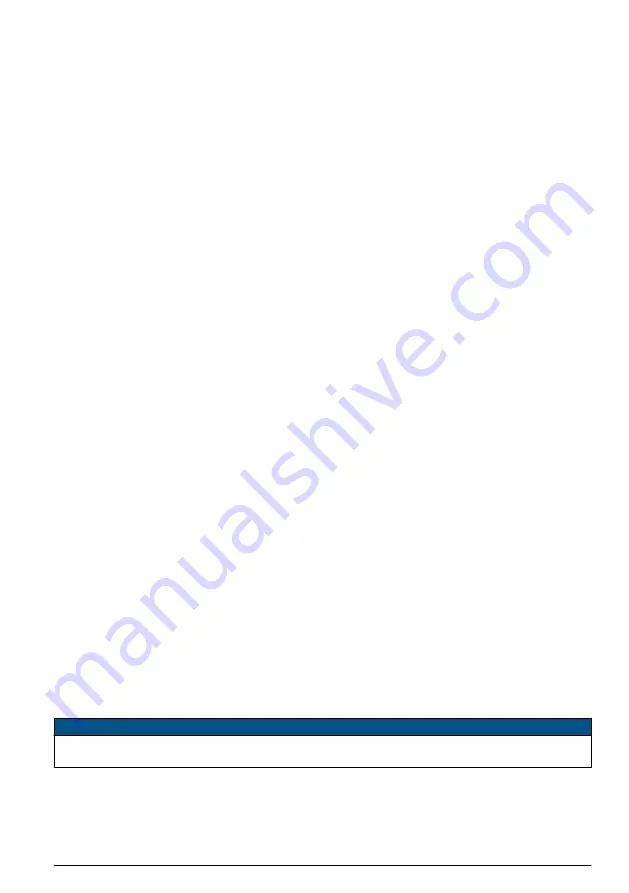
• If the sensor will be installed in water (or if an increase in the water level could put the sensor in
water), the cable guard is attached to the sensor. Refer to
on page 10.
• The measurement units represented by the 4–20 mA analog output are correct for the type of
measurement: mg/L (liquid measurements) or ppm (air measurements). Refer to
measurement units of the 4–20 mA output
1.
For installation in water, do the steps that follow:
a.
(Optional, recommended) Connect the eye bolt on the cable guard to earth ground in
accordance with local, regional and national requirements.
For hazardous location installation, refer to the
GS2440EX Hazardous Location Safety
Precautions
document for the grounding requirements.
b.
Attach the chain to the eye bolt on the cable guard.
c.
Attach the other end of the chain to an object that is directly above the water and does not
move (e.g., wire grid, crossbeam or the crossbeam clamps for the field transmitter).
d.
Lower the sensor into the water. Keep the sensor cables out of the water.
e.
Make sure that the upstream side of the sensor is in a moving stream of water and not near
walls.
f.
Adjust the chain length so the cable guard is out of the water and the sensor is 5 cm
(2 inches) or more from the bottom of the channel or well.
g.
If the sensor could hit a wall or other objects, put the sensor in a 70-mm (2.75-inch) diameter
PVC pipe or larger. Make sure that the measuring end of the sensor hangs below the PVC
pipe.
Attach the PVC pipe to an object directly above the water that does not move or to the side of
the well.
h.
Wind the loose cables into a coil. Use cable ties to hold the cables in position.
2.
For installation in air, do the steps that follow:
a.
(Optional, recommended) Connect the grounding screw on the sensor to earth ground in
accordance with local, regional and national requirements.
For hazardous location installation, refer to the
GS2440EX Hazardous Location Safety
Precautions
document for the grounding requirements.
b.
Attach a chain (or steel cable) to the attachment hook on the sensor.
c.
Attach the other end of the chain (or steel cable) to an object that is directly above the water
that does not move (e.g., wire grid, crossbeam or the crossbeam clamps for the field
transmitter).
d.
Lower the sensor.
e.
Adjust the chain length as necessary.
f.
Wind the loose cables into a coil. Use cable ties to hold the cables in position. Keep the
sensor cables out of the water.
3.
For installation in a pressurized water pipe, install the optional adapter for inline mounting. Refer
to the instructions supplied with the adapter for inline mounting.
4.
For installation in a pressurized air pipe, plumb a bypass air line to the optional air flow cell. Refer
to the instructions supplied with the air flow cell.
Section 5 Maintenance
N O T I C E
Do not disassemble, modify or repair the instrument. Disassembly will damage the sensor and void the warranty.
If the internal components must be repaired, contact the manufacturer.
English
19
Summary of Contents for GS1440
Page 541: ......
















































